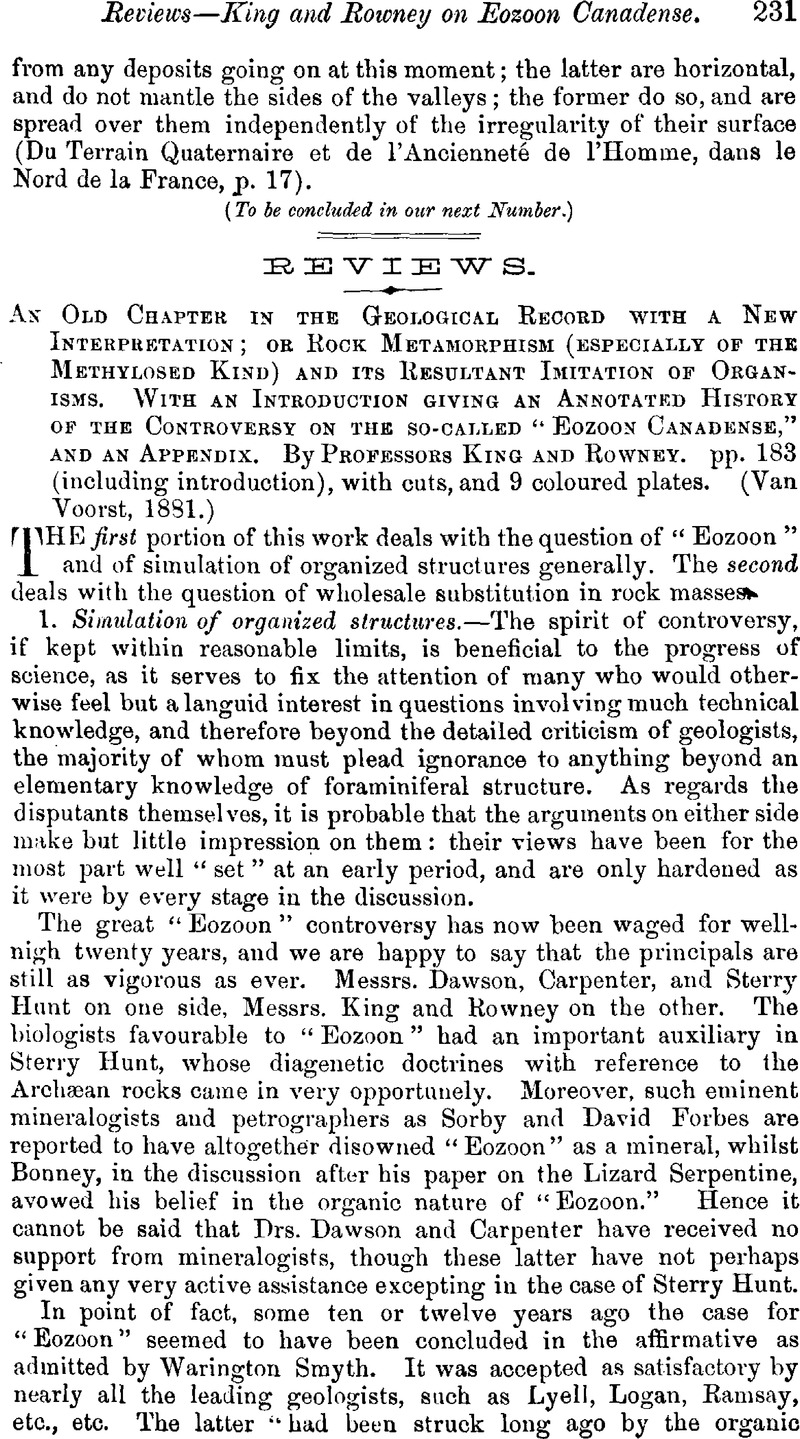No CrossRef data available.
Article contents
An Old Chapter in the Geological Record with a New Interpretation; or Rock Metamorphism (Especially of the Methylosed Kind) and its Resultant Imitation of Organisms. With an Introduction Giving an Annotated History of the Controversy on the so-called “Eozoon Canadense,” and an Appendix. By ProfessorsKing and Rowney. pp. 183 (including introduction), with cuts, and 9 coloured plates. (Van Voorst, 1881.)
Published online by Cambridge University Press: 01 May 2009
Abstract

- Type
- Reviews
- Information
- Copyright
- Copyright © Cambridge University Press 1882
References
page 232 note 1 This is of course totally opposed to Sterry Hunt's “precipitation” views.
page 232 note 2 It would seem that the idea of tracing organized structure in rock sections has recently become quite a mania with some Germans. This peculiarity has culminated in Hahn's “Urzelle,” and above all in his “Die Meteorite,” where 32 quarto plates are devoted to photographs of sections of meteorites, which are supposed to show structure like that of corals, crinoids, etc. In many of the photos there is an appearance which is evidently due to the effects produced by the section of some orthurhombic mineral – probably enstatite. In the last table of plates there is a photo which certainly is very foraminiferal, but returning to the explanation of plates, we find, instead of a celestial nummulite or aerial Eozoon, the disappointing words “Nummulit von Kempten.” Still more recently Herr P. F. Reinsch has published an elaborately illustrated work, “Microstructur der Steinkohle,” where some of the plumose figures intended for organisms have a most suspicious resemblance to radiations of calcite or other mineral deposit.




